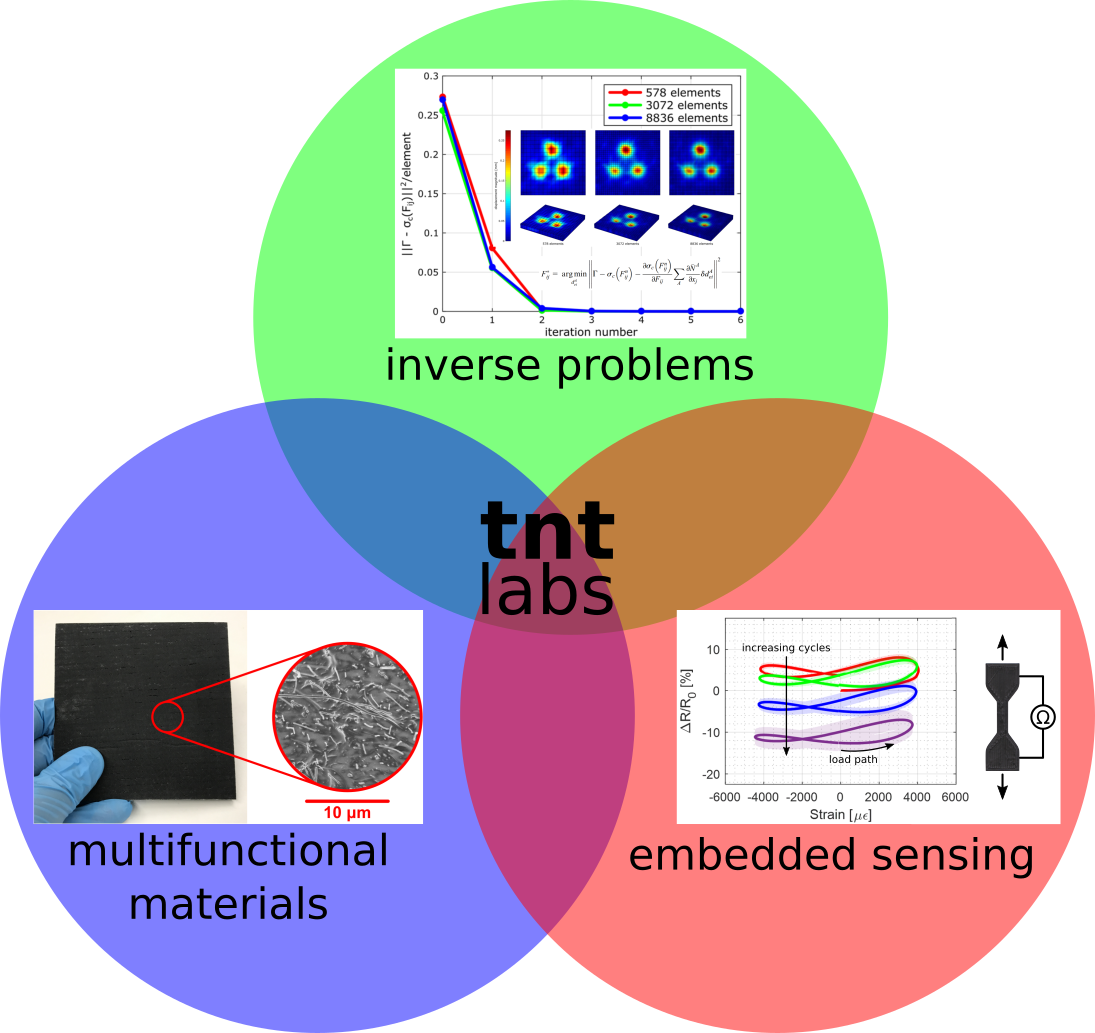Cross-Cutting Research
Cross-Cutting Research
Research in TNT Labs exists at the intersection of multifunctional materials, embedded sensing, and inverse problems. Combined, these thrusts allow us to make novel and impactful contributions to areas such as aircraft structural sensing, printable sensors, and smart biomedical technology.

- Multifunctional materials: Multifunctional materials allow engineers to do more with less. TNT Labs specializes in self-sensing multifunctionality—materials that are capable of intrinsically reporting on their condition. We manufacture, experimentally characterize, and model the self-sensing properties of these materials across length scales for applications including aerostructures, orthopaedic implants, and, among others, soft robotics. Above, a glass fiber/epoxy laminate has been modified with a small weight fraction of carbon nanofibers to impart self-sensing properties.
- Embedded sensing: Multifunctional materials allow us to build sensing capabilities into structures, devices, or components. By monitoring the electrical response of these materials, we gain real-time insight into their in-situ mechanical, thermal, or chemical conditions. Combined with advances in additive manufacturing, highly customizable sensors can be printed on-demand and embedded in a wide range of applications. Above, thermoplastic polyurethane filament was modified with carbon nanofibers to be self-sensing. Resistance changes in the printed sensor were used to track high-cycle strain loading.
- Inverse problems: Even though self-sensing materials provide insight into material condition, they do not tell us the actual condition of the material. That is, we are often much more interested in, for example, the underlying stress, temperature, or chemical state that gives rise to an observed electrical change rather than the electrical change itself. Recovering the actual material condition requires both models of stimulus-property relations and methods of inverting these models. This often takes the form of an ill-posed inverse problem. Our research has pioneered methods of solving these inverse problems to achieve unprecedented full-field material state awareness. Above, the full-field displacements of a soft tactile sensor are recovered by inverting the strain-conductivity relation using an iterative approach.
